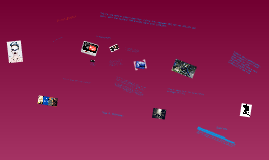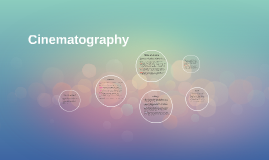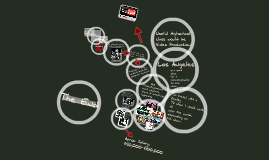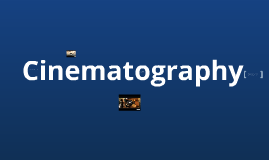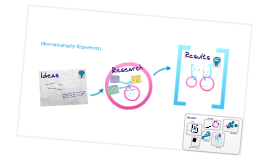Cinematography
Transcript: Most art forms share different creative aspects with one another… film is no different. Cinematography comes up in paintings, sculpture, and photography Storytelling comes up in literature Script writing is also a part of theatre Editing, however, makes film a truly unique form of art. Cinematography deals with setting up shots Framing the Shot Scale of Shot Movement of Camera While this is the job of the cinematographer, the director can take a varying role in this matter A “picture” of film One frame is one picture (usually there are 24 frames for 1 second of film) All of the visuals appear in one frame (foreground and background) Angle of framing The location of the camera relative to the subject Sometimes a high angle shot or a low angle shot is used whereby the camera is either higher or lower than the subject. This allows for certain relationships (power, meek, etc) to be implied Level of Framing (camera height): The entire camera is raised (high level) or lowered (low level) but kept parallel to ground Moving the camera to keep the subject in the center of the frame This movement can be slow or fast Uses a combination of pans, tilts, tracking, crane Wide-Angle lens A lens which allows a wider shot than usual. Gives a larger depth of field Useful for establishing shots of scenery Usually contains two figures, one with his/her back to the camera, and the other facing the camera The movement of the camera to show action Can track subject while moving Can become part of action Can rise above action Can zoom onto to subject Can pan or tilt to reveal more information Technically, not a camera motion as only the lens moves to change the focal length. The size of objects also change. Audience moves towards or away from subject. A slow or fast zoom can also add to tension in a scene. Saving Private Ryan Panning Examples Lawrence of Arabia A shot showing large areas (crowds, entire buildings, vast areas) used to establish a scene Movement– Whip Pan A type of panning whereby the camera moves very rapidly. The effect is that the shot blurs into horizontal lines before the camera stops and another shot is framed. Stagecoach Scale Framing: Canted Framing: Angles Framing: Following The use of the camera to create a world that we perceive on screen. Framing: Angles High Noon Framing Movement-- Zoom Shrek Pulp Fiction Tracking shots a shot wherein the camera tracks the motion of an object. A person running while a camera moves long side will appear to stay in place while the background slides backwards. The camera is typically placed on a dolly or wheeled setting to move steadily Usually shows an adult from head to knees. In westerns, we need to show the cowboy’s gun a 4-5 foot object would appear the height of the screen. Crane Example Governed by certain conventions, but not restricted by these conventions; reflecting and complementing the film’s other formal elements A shot showing an entire room or a complete person (person appears height of screen). Shots is used to show full body action in a space—ex: American musicals Saving Private Ryan Scale: Close Up (CU) The Patriot Cinematography Movement-- Tilt Scale: Medium-Close up Canted Framing the camera is tilted to one side the right side or left side higher than the other. Used to disorient audience Shrek The Color of Money Saving Private Ryan Crane Shot the camera is mounted to a crane that can be hoisted into the air. Crane shots are typically long or extremely long shots Movement Movement-- Tracking Shots of differing distances… extreme long shot down to extreme close up Longer shots show wider area but less detail Shorter shots show less area but more detail As camera moves closer there is less depth of field (image is flatter) while with the camera far away the depth of field is greater West Side Story Examples of a Zoom Shows part of person’s face shot to emphasize detail Dramatic effect to show someone’s thoughts Hollow Man Panning Examples Films under a minute long and usually presented a single scene, authentic or staged, of everyday life, a public event, a sporting event or slapstick. No cinematic technique: no editing and usually no camera movement, and flat, staged compositions. The Graduate Over the Shoulder Shot Movement-- Pan Mr. Smith Goes to Washington Head to chest shot whereby a person takes up most of the room on the screen. The typical shot for an interview 1895 Birth of Cinematography Panning can reveal new information Eyes Wide Shut Framing: POV Following shot the camera follows the actors through the use of a pan/tilt/crane/ tracking Stagecoach The Stendhal Syndrome Without Limits To Kill a Mocking Bird Point of View Shot (POV): the camera is placed to mimic a character’s specific point of view. Pan: Turning/pivoting the camera to the left/right. Used to show the physical/spatial relationship between objects. High Noon Scale: Extreme Long Shot (ELS) also called an “establishing shot” Framing: Level The Diving Bell and the Butterfly






